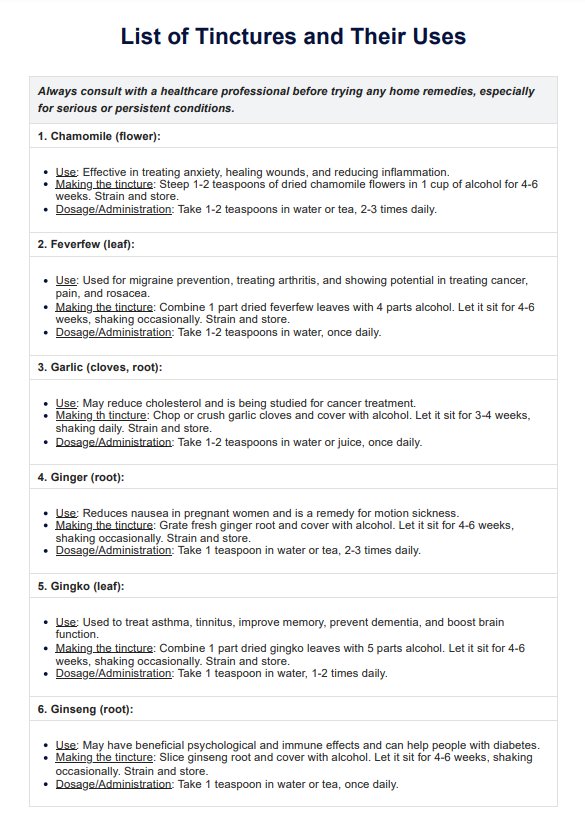A tincture is a concentrated liquid herbal preparation made by soaking plant material in alcohol or another solvent to extract its active compounds. It is typically taken in small, measured doses for therapeutic purposes.

List of Tinctures and Uses
Read our List of Tinctures and Uses for therapeutic properties, how to make them with fresh or dried herbs, safe dosages, and possible interactions.
List of Tinctures and Uses Template
Commonly asked questions
To make a tincture, herbs are chopped and soaked in alcohol (or sometimes glycerin or vinegar) for several weeks, allowing the solvent to extract the beneficial compounds. The mixture is then strained, and the resulting liquid is stored in a dark glass bottle for use.
A tincture is a type of extract that specifically uses alcohol (or similar solvents) as the base. In contrast, "extract" is a broader term that includes preparations made with water, glycerin, or other solvents. Extracts can also be more concentrated than tinctures, depending on the herb-to-solvent ratio used.
EHR and practice management software
Get started for free
*No credit card required
Free
$0/usd
Unlimited clients
Telehealth
1GB of storage
Client portal text
Automated billing and online payments











